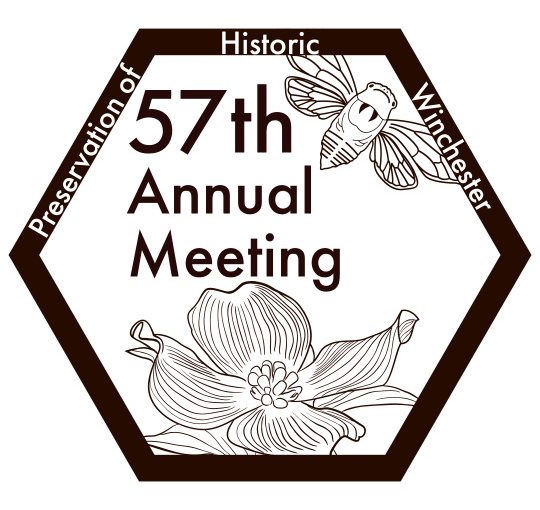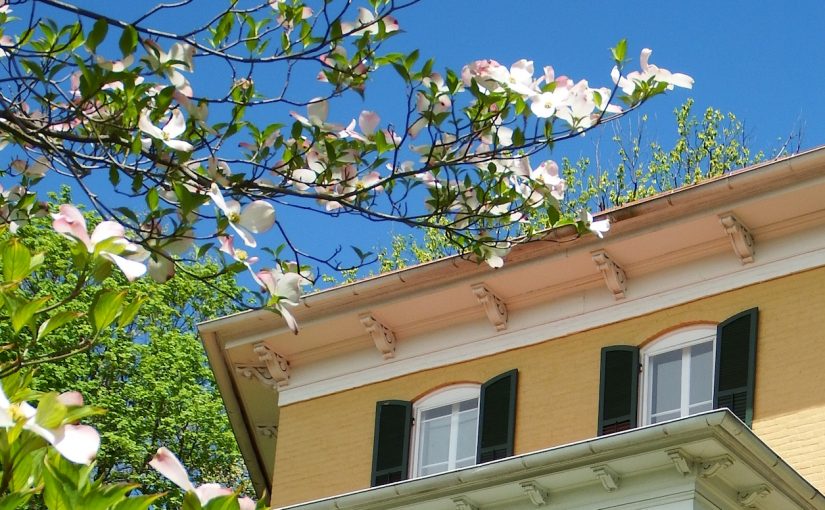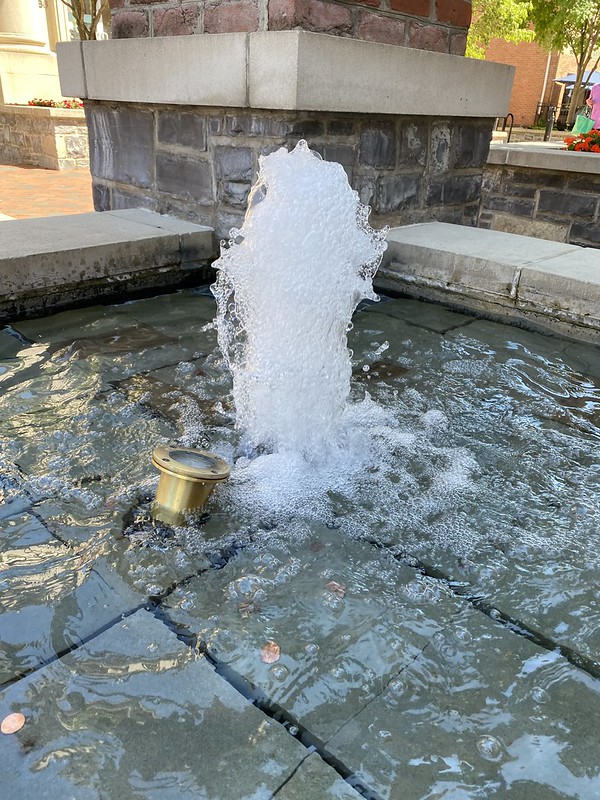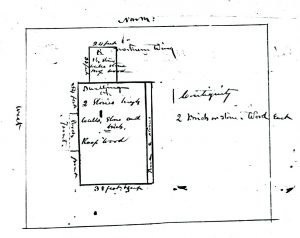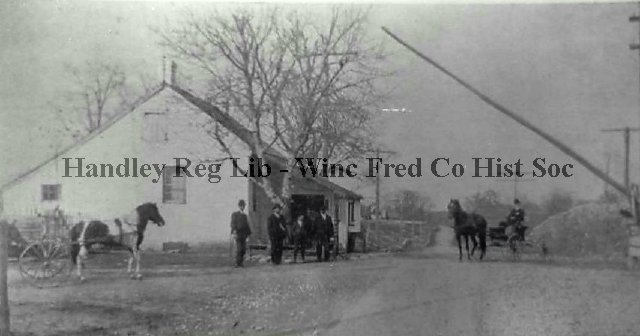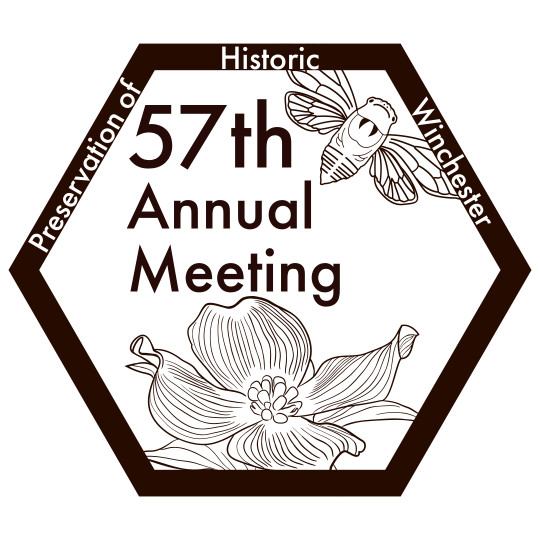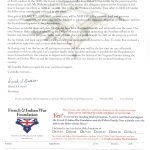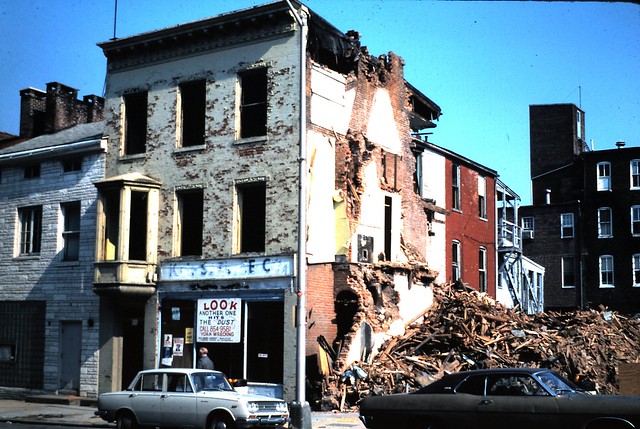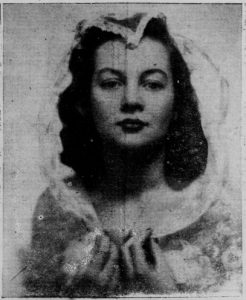Despite an unexpected afternoon rainstorm and our own surprise at having double-booked so many of our members with other activities and services on the same day and time, we still managed to pull together a successful annual meeting.
If you were unable to attend, you can catch up with the official portion of the meeting and the presentation of the awards on our YouTube:
If this is a bit long for you to watch, you can find an album with images at our Flickr. We would especially like to recognize the 2020 and 2021 award winners, as follows:
Awards of Merit:
These awards recognize renovations of houses or buildings that contribute to improving the character of their neighborhoods and maintaining the overall historic fabric of the city. In order of nomination:
- Nancy Murphy, 126 West Leicester Street
- Stephen Von Fange, 501-507 North Cameron Street
- Karen Darby, 417 Fairmont Avenue
- Betty Laws, 416 South Cameron Street
- Stephen P. Williams, 212 North Kent Street
- GinTon, LLC, Henkel House, 316 West Boscawen Street
- Beverley Byrd, 312 West Boscawen Street
- David E. Mitchell, 123 East Cork Street
- The Clowser Foundation, Clowser Family Cemetery, 152 Tomahawk Trail
- Scott Bessette, Philip Williams House, 25 West Piccadilly Street
Belchic Award:
This award is named in honor of Ben Belchic, a founding member of PHW. Ben Belchic was also an active member of the Winchester-Frederick County Historical Society, so the Belchic award recognizes a significant contribution to understanding Winchester’s history. These awards are generally presented for written texts, such as books, maps, National Register nominations, and guided tours.
This year we were proud to recognize the work of Mike Robinson, who has been bringing Winchester’s history to a wider audience through his Facebook page Winchester Tales, that have subsequently expanded into five-volume set of books, with more on the way.
Patron’s Award:
This award recognizes a person or business which has been an outstanding supporter of the goals and programs of PHW. This award usually recognizes a financial component.
This year, we were honored to recognize Margaretta Barton Colt, who has long been a supporter of the history and architecture of Winchester. Her involvement with PHW started in our Kurtz Cultural Center days during the publication of Defend the Valley, for which she commissioned the painting “Winchester & Frederick County, Virginia” by Page Huff Dillon. That may sound familiar, as the painting has reentered our day to day lives again through the Shenandoah Valley Tapestry Project, which recreated the painting in needlework. Most recently, you can find out more about the tapestry and the houses included in it at www.svtapestry.com.
One of our award winners, David Mitchell, was unable to attend in person on Sunday. He did, however, provide a note on his work to his porch at 123 East Cork Street. You may remember the painstaking work and the scaffolding and tarps installed to protect the porch while it was under repairs. We are happy to report via David that “all original salvageable 1800s heart pine used in the original construction was stripped of paint and restored. Most of the original porch flooring is still present. Both ends required replacing with 1 1/8 inch tongue and groove, copied and milled to match. I found three of the original balusters and copied them . . . for the porch. . . . The woodwork was all preceded by rebuilding the stone foundation of the porch damaged by water on the east end, where there was an inch wide crack from the east corner to the left of the first floor window sill, and stones falling out from loss of mortar.” This specialized work was undertaken by Hicksville Planning Mill and Marshall Adams Stonework, along with the use of a product called Rot Doctor for wood preservation. David truly went above and beyond in the care he took to preserve and restore his porch.
Due to the rain, we also omitted the official announcement of our newest Honorary Council member, Ed Acker. As you may remember, he served as the VP of Education at PHW and spearheaded the Lunch and Learn lecture series. We have reproduced Ed’s note on this recognition in its entirety below:
Dear Members of PHW:
I want to thank the Board of Directors of PHW very much for this appointment to the Honorary Council. I was totally surprised and appreciate its significance very seriously.
I hope to see the very necessary educational function of PHW continue with renewed vitality, perhaps not in its most recent form, but being able to take advantage of new electronic communications technologies that have come on stream since the Covid pandemic. Also, I had always wanted to get more PHW involvement with K-12 children, which can instill in them the seed of a lifetime interest in history and preservation.
Professionally, I have been involved in historic preservation since 1963 when I had a summer architectural job and worked on an award-winning adaptive reuse project at the State University of NY Merchant Marine Academy, converting an old mess hall winding through the gigantic 7-foot-thick granite walls and arches of Fort Schuyler into the school’s library, pictures of which are still proudly displayed on the school’s website. Later that year I partook in an architect’s march to protest the planned demolition of the wonderful McKim, Mead and White Pennsylvania Station building, the event which many mark as the beginning of the modern preservation movement.
My last historic preservation project was to design the structural rehabilitation of the walls and granite recladding of the 110-foot-tall facades of the Brooklyn-Battery Tunnel Ventilation Building. This octagonal building is located at the northern tip of Governor’s Island, sitting quietly and mostly unnoticed in the middle of New York harbor.
When Sherry Nay Acker and I moved to Winchester in June 2011 it was the twilight of both of our careers, she as a history professor and I as an actively practicing architect. But neither of us played golf, so what would we do? Sherry met Warren Hofstra, in fact at the exact time of the great Virginia earthquake at his Abram’s Delight office, who then put us in contact with Mark Lore, who introduced me to PHW, and the commitment to become Chairman of the Education Committee.
Sherry’s interest in her family’s genealogy went into overdrive. She knew that her great grandfather had been injured and taken prisoner at Halltown, WV in the Civil War. His West Virginia regiment had been retreating north and fought at Kernstown Two, Rutherford Crossing, and Halltown. Some of her Ohio ancestors were at the 2nd Battle of Winchester. And she was related to the Scotch Bruce’s who had owned one of the original Winchester city lots at the SW corner of E. Piccadilly and N. Cameron Streets. So having not been here for a long time, we now have some real historical ties to Winchester.
I arrive at this time of this year with a jumble of emotions which is reflected in this piece. June 24th will mark the one-year anniversary of Sherry’s death and our family and friends still miss her so much. June 30th and July 7th are the birthdays of our wonderful daughters, Alexandra, and Amanda respectively and we will gather in Denver to both remember and celebrate. And our grandchildren aged 5, almost 12, and 15 have some of their own milestones – Abe will start kindergarten in August; Hudson graduated elementary school, will start middle school, and is in scouting; and Sawyer is in high school and heading to Eagle scout, and is now learning how to drive.
I guess an underlying theme tying all these jumbled thoughts together is Resilience – Rebirth – Renewal, which can apply to our individual lives, our homes and workplaces, our neighborhoods, friends, and associations, and our entire communities.
Resilience – to have the toughness, flexibility, and canny skill to endure the hard knocks; Rebirth – to realize survival and to start anew; and Renewal – to establish a sustainable path to endure and thrive into the future.
Thank you for the opportunity to continue to serve the PHW community.
